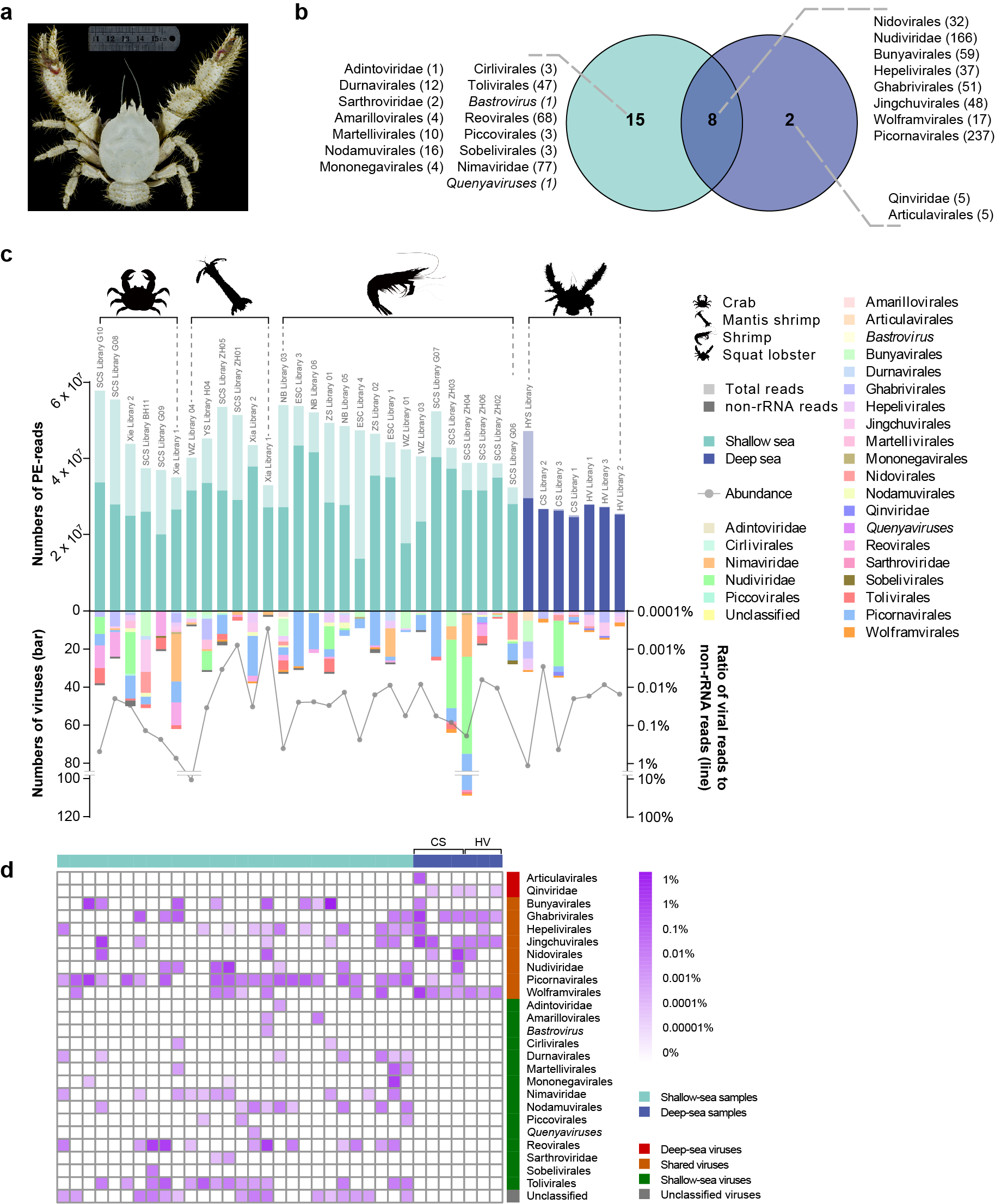In a study published in the journal Science Bulletin on 16 September 2021, entitled Comparative study of the malacostraca viromes between deep sea and shallow water, Prof. CUI Jie’s group at Institut Pasteur of Shanghai of the Chinese Academy of Sciences (CAS) provided a snapshot of the virome structure in the deep sea and the viral connectivity and heterogeneity between viromes in different aquatic depths.
The special characteristics of the deep sea provide complex ecological niches for aquatic organisms, and studies of ocean crustacean viromes are generally lacking, especially in the deep sea.

The overall characterization of virus distribution. (a) A picture of Shinkaia crosnieri. (b) Overlap of RNA viral classifications in aquatic invertebrates between the deep (represented by deep blue) and shallow (represented by light blue) seas. (c) The distribution and diversity of the identified viruses. The top histogram shows the total number of PE reads or non-rRNA PE reads in each library, with full name of each library and host taxonomy displayed above. The bottom graph shows a summary of the classification of virus species found in this study and the total virus abundance in each library. (d) Heatmap of the abundance of each classification in each library. CS represents cold seep and HV represents hydrothermal vent. (Image by Prof. CUI Jie’s group)
Here, CUI Jie’s team have performed viromics of a population of squat lobster (Shinkaia crosnieri) inhabiting in a deep cold seep and other 34 marine shrimp or crabs. Notably, novel viruses spanning ten classifications (Articulavirales, Bunyavirales, Ghabrivirales, Hepelivirales, Jingchuvirales, Nidoviridae, Nudiviridae, Picornavirales, Qinviridae, and Wolframvirales) were identified. Viruses of Qinviridae and Articulavirales were discovered only in the deep sea and eight other taxa of viruses were shared between depths, indicating both the heterogeneity and connectivity of the malacostracan crustacean viromes between different aquatic depths. Genomic analysis showed that these newly found ocean viruses exhibited high elasticity in length and arrangements of viral genes.
This study represented the first comparative study of the malacostracan crustacean viromes between deep sea and shallow water and provided a glimpse of deep-sea virus structure, enhancing our understanding of the diversification and the distribution patterns of viruses in the sea.
Contact:
CUI Jie
Institut Pasteur of Shanghai
Email: jcui@ips.ac.cn
Reference: Comparative study of the malacostraca viromes between deep sea and shallow water
Link: https://www.sciencedirect.com/science/article/pii/S2095927321006253

